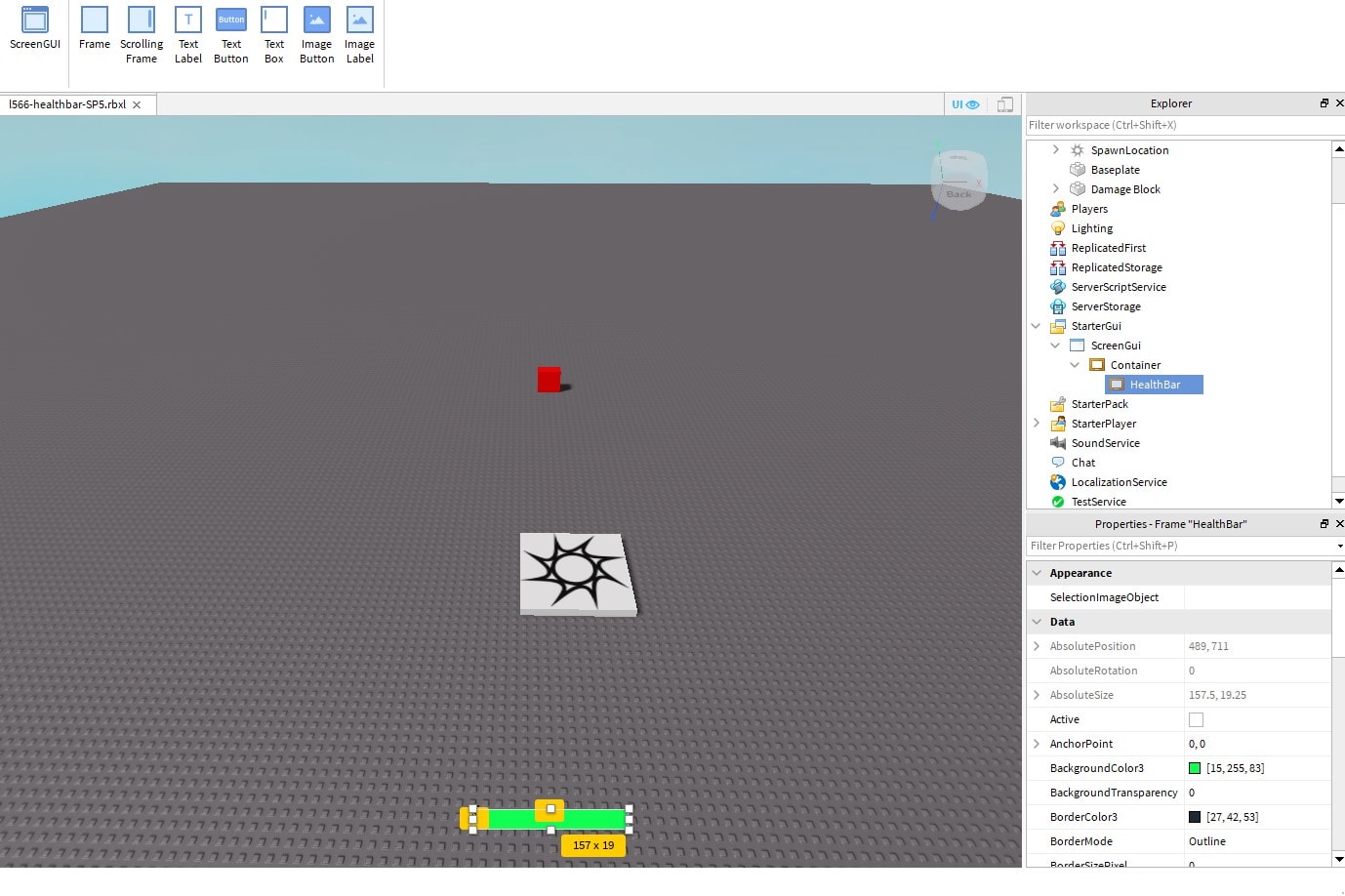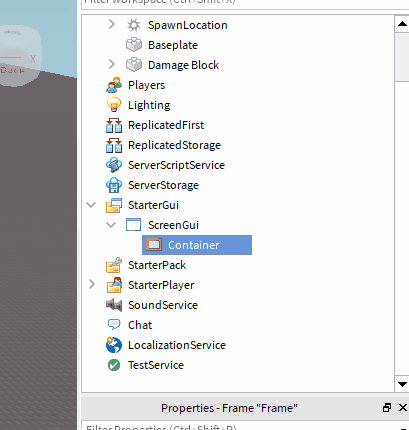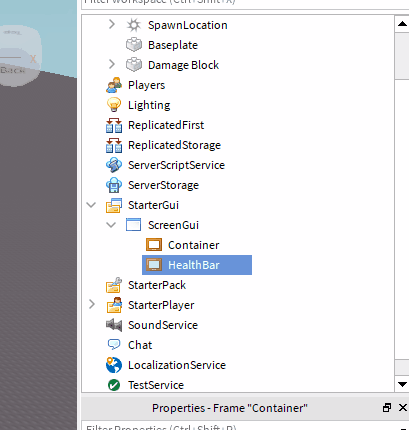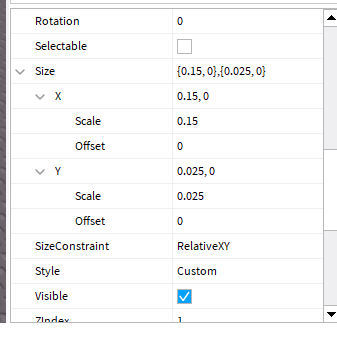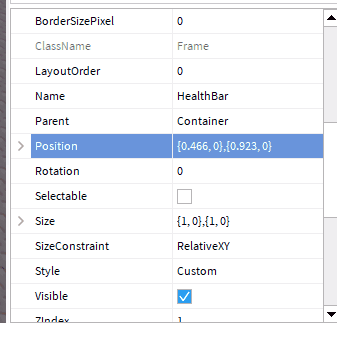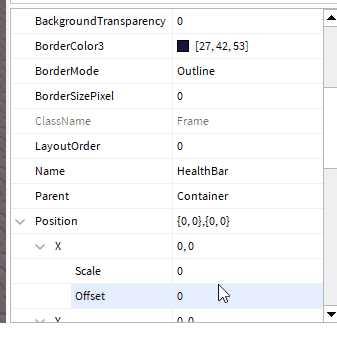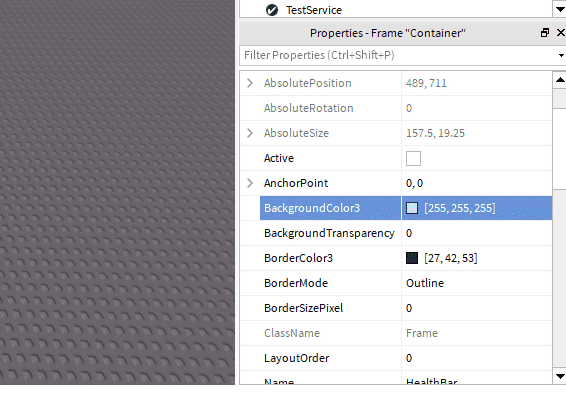1. Open Roblox studio and load the starter kit
2. Test it out
3. Group Activity: Parent and Child Sizes
4. Create a health bar container
5. Create the health bar
6. Create a local script
7. Access the player and health bar UI
8. Write a function to update the health bar
9. Test and adjust
10. Polishing the health bar effect
11. (Optional) Turn off the default GUI
12. (Optional) Push the visual design
Project 566: Custom Health Bar
5. Create the health bar
This will be the bar that actually changes size, and will go on top of the health bar container you just made.
Your goal
